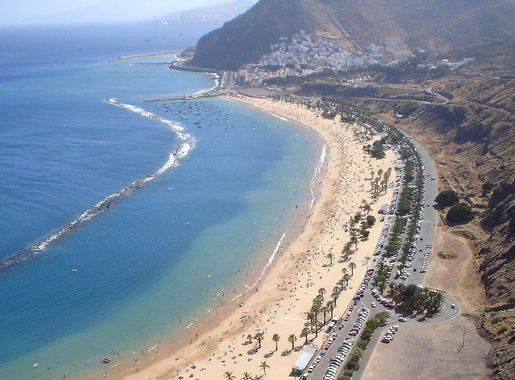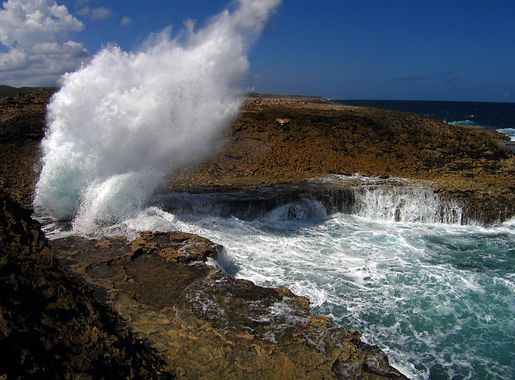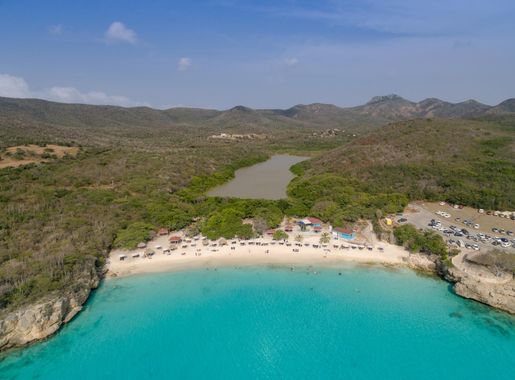
Playa Santa Cruz: Curacao's Hidden Gem
Discover Playa Santa Cruz in Curacao, where golden sands, clear waters, and vibrant marine life await in a serene and picturesque setting.
Playa Santa Cruz is one of Curacao's best-kept secrets, offering a perfect blend of natural beauty and serene atmosphere. Located on the island's northwest coast, this picturesque beach is known for its golden sands, clear turquoise waters, and lush surrounding vegetation. The beach is relatively untouched by large crowds, making it an ideal spot for those seeking a peaceful retreat. The waters of Playa Santa Cruz are ideal for swimming, snorkeling, and diving. The vibrant coral reefs and abundant marine life make underwater exploration a must. For adventurers, there are nearby hiking trails leading to the Blue Room, a stunning sea cave known for its brilliant blue light reflections. Local fishermen often bring in their daily catch to the beach, allowing visitors to enjoy the freshest seafood. The beach also features a small restaurant where you can savor local delicacies while enjoying ocean views. Whether you're looking to relax under the sun, explore the underwater world, or indulge in local cuisine, Playa Santa Cruz offers a unique and memorable experience.
Local tips in Playa Santa Cruz
- Visit early in the morning or late afternoon to avoid the hottest part of the day.
- Bring your own snorkeling gear to fully enjoy the vibrant underwater life.
- Wear water shoes as some areas can be rocky.
- Don't miss the Blue Room sea cave, accessible via a short hike or boat trip.
- Try the local seafood at the beachside restaurant for a delicious meal.
Playa Santa Cruz: Curacao's Hidden Gem
Playa Santa Cruz is one of Curacao's best-kept secrets, offering a perfect blend of natural beauty and serene atmosphere. Located on the island's northwest coast, this picturesque beach is known for its golden sands, clear turquoise waters, and lush surrounding vegetation. The beach is relatively untouched by large crowds, making it an ideal spot for those seeking a peaceful retreat. The waters of Playa Santa Cruz are ideal for swimming, snorkeling, and diving. The vibrant coral reefs and abundant marine life make underwater exploration a must. For adventurers, there are nearby hiking trails leading to the Blue Room, a stunning sea cave known for its brilliant blue light reflections. Local fishermen often bring in their daily catch to the beach, allowing visitors to enjoy the freshest seafood. The beach also features a small restaurant where you can savor local delicacies while enjoying ocean views. Whether you're looking to relax under the sun, explore the underwater world, or indulge in local cuisine, Playa Santa Cruz offers a unique and memorable experience.
When is the best time to go to Playa Santa Cruz?
Iconic landmarks you can’t miss
Queen Emma Bridge
Discover the Queen Emma Bridge in Willemstad, a floating marvel connecting vibrant districts with stunning views and rich history.
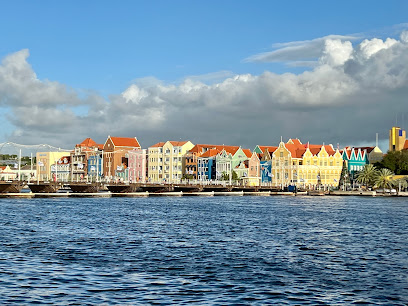
Cas Abao Beach
Discover the stunning beauty of Cas Abao Beach in Curaçao, a tropical paradise perfect for relaxation and water adventures.

Curaçao Sea Aquarium
Explore the breathtaking marine life at Curaçao Sea Aquarium, where interactive exhibits and conservation come together for an unforgettable experience.
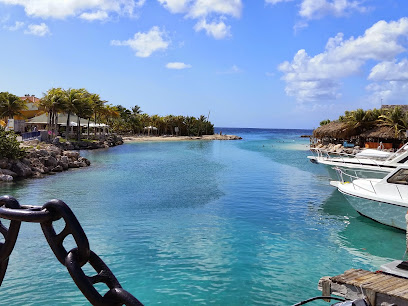
Hato Caves
Visit Hato Caves in Curaçao for an unforgettable journey through stunning limestone formations and a glimpse into the island's rich history.
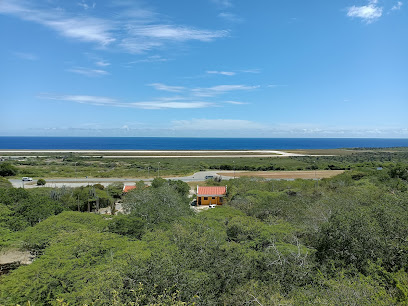
Playa Grandi
Experience the serene beauty of Playa Grandi, a premier beach in Curaçao known for snorkeling, stunning views, and relaxing vibes.
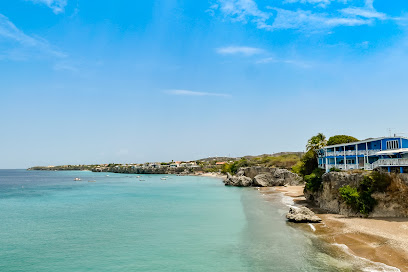
Playa Lagun
Explore the breathtaking beauty of Playa Lagun, a serene beach in Curaçao known for its clear waters, vibrant marine life, and relaxing atmosphere.
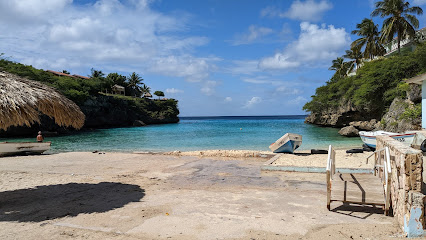
Shete Boka National Park
Explore the breathtaking landscapes and unique wildlife of Shete Boka National Park, a stunning natural reserve on Curaçao's rugged coastline.
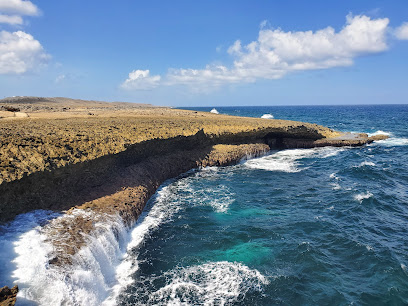
Kleine Knip
Experience the stunning beauty of Kleine Knip, a tropical beach paradise in Curaçao with crystal-clear waters and vibrant marine life.
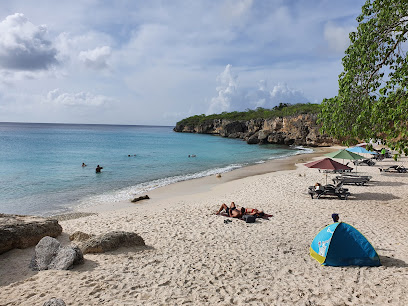
Boka Pistol
Discover the breathtaking beauty of Boka Pistol, a natural wonder in Curaçao that offers stunning views, adventure, and tranquility.
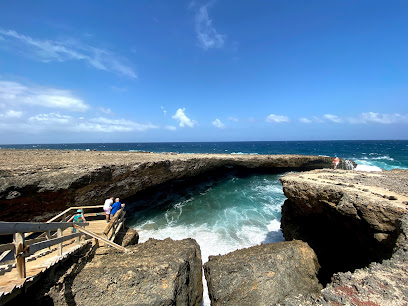
Watamula Hole
Experience the captivating beauty of Watamula Hole in Curaçao—a breathtaking scenic spot perfect for snorkeling, photography, and relaxation amidst nature's wonders.
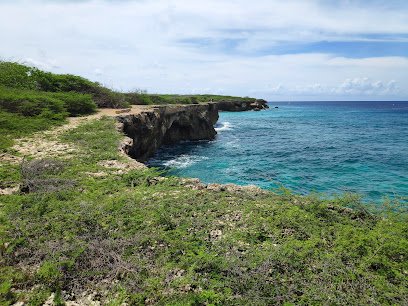
Grote Knip
Experience the breathtaking beauty of Grote Knip, one of Curaçao's finest beaches, perfect for sunbathing, snorkeling, and relaxation.
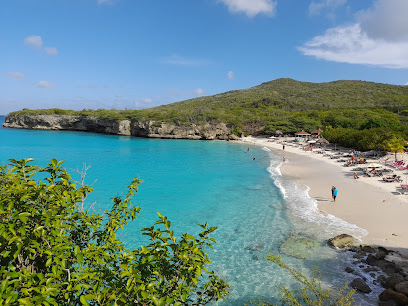
Boka Tabla
Experience the breathtaking coastal beauty of Boka Tabla in Curaçao's Shete Boka National Park, a must-visit destination for nature lovers and adventure seekers.
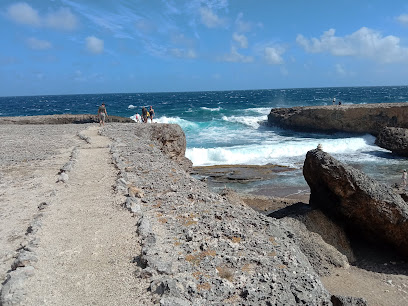
Boka Wandomi
Explore the stunning beauty and tranquility of Boka Wandomi, a must-visit destination in Curaçao, known for its crystal-clear waters and breathtaking views.
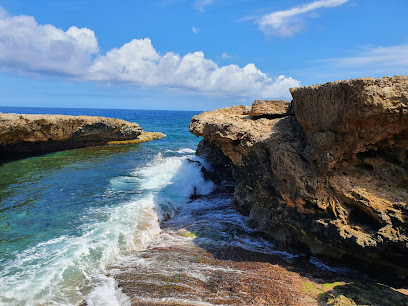
Curaçao Sign
Discover the vibrant Curaçao Sign in Willemstad, a stunning landmark that encapsulates the island's rich culture and breathtaking beauty.
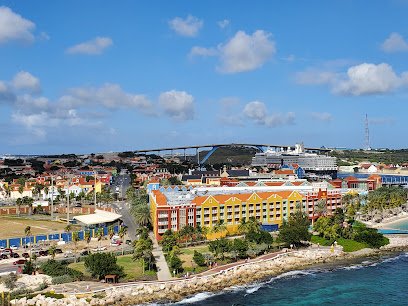
Santa Martha Bay View Lookout Point
Discover the stunning vistas of Santa Martha Bay from the lookout point, a must-visit destination for breathtaking views in Curaçao.
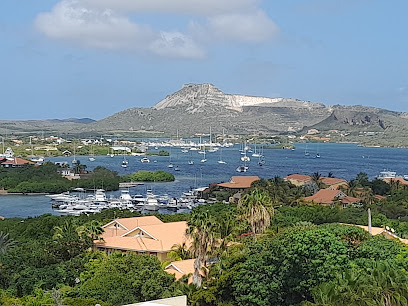
Essential places to dine
Pirate Bay Curaçao Beach Club and Restaurant
Discover the ultimate beach experience at Pirate Bay Curaçao with exquisite dining, refreshing drinks, and stunning ocean views.
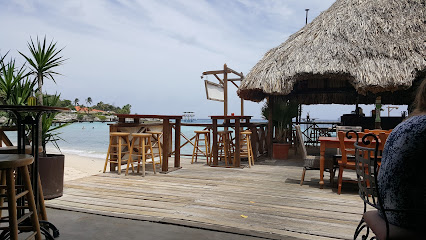
Karakter Beach - Lounge - Restaurant
Experience culinary delights at Karakter Beach – Lounge – Restaurant while soaking up sun-kissed views on Curaçao's pristine shores.

Restaurant Playa Forti
Discover exquisite seafood and breathtaking views at Restaurant Playa Forti in Sabana Westpunt, Curaçao - a true culinary delight!

Jaanchie Restaurant
Experience authentic Curaçaoan cuisine at Jaanchie Restaurant, where every dish tells a story amidst stunning island views.
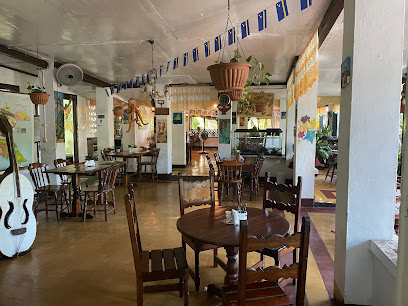
Shelterrock Paradise
Discover flavorful Caribbean cuisine and vibrant live music at Shelterrock Paradise in Curaçao – where every meal becomes an unforgettable experience.
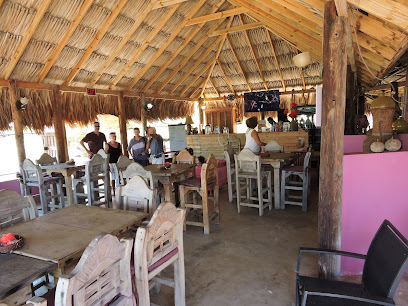
Sol Food
Experience authentic Curaçaoan cuisine at Sol Food in Sabana Westpunt—where every meal tells a story.
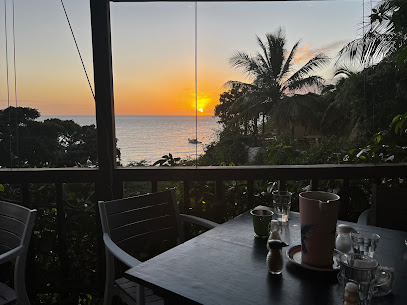
Bahia Beach Bar & Restaurant
Experience exquisite Caribbean cuisine at Bahia Beach Bar & Restaurant in Lagun, Curaçao - where stunning views meet delicious flavors.
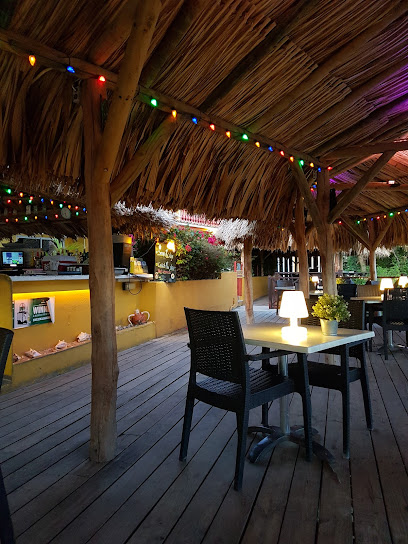
Discover Lagun
Explore the vibrant flavors of Curaçao at Discover Lagun - where every dish tells a story of Caribbean culture.
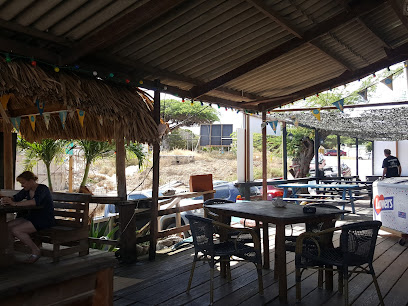
Landhuis Daniel restaurant
Discover Landhuis Daniel: A hidden gem in Curaçao serving exquisite local and international cuisine amidst stunning natural beauty.
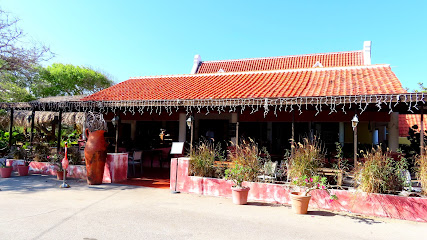
Koraal Rooftop Terrace
Discover Koraal Rooftop Terrace in Curaçao - where exquisite dining meets breathtaking ocean views for an unforgettable experience.
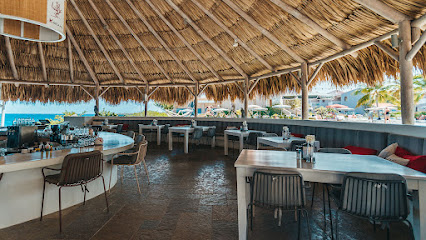
Bistro e lanternu
Discover the flavors of Curaçao at Bistro e Lanternu - where fresh ingredients and simple dishes create unforgettable dining experiences.
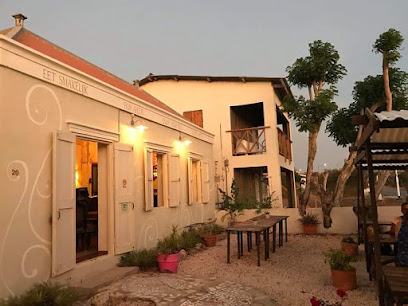
Coast Beach Restaurant @ Blue Bay Curaçao Golf & Beach Resort
Experience culinary delight with eclectic flavors at Coast Beach Restaurant in Blue Bay Curaçao Golf & Beach Resort.
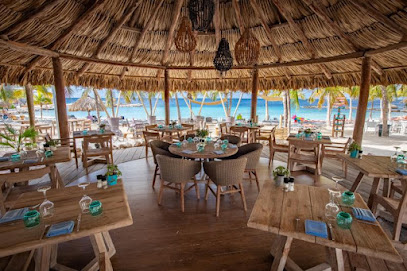
Restaurant X
Experience authentic Caribbean flavors at Restaurant X in Sint Michiel, Curaçao - where every meal is a celebration of local cuisine.
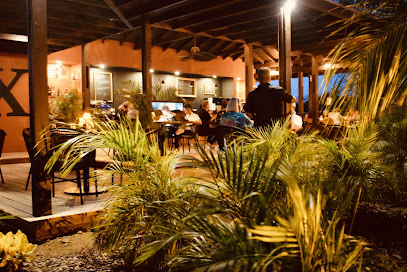
Brass Boer Curaçao
Discover exquisite Caribbean flavors at Brass Boer Curaçao – a culinary haven nestled within Blue Bay Golf & Beach Resort.
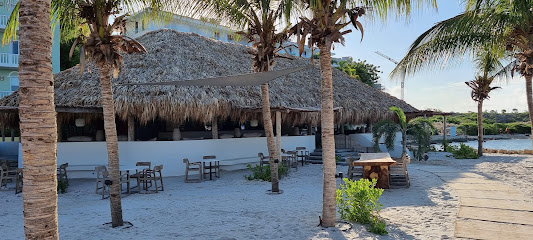
Cast away beach bar curacao
Experience tropical bliss at Cast Away Beach Bar in Curaçao - where delicious food meets stunning ocean views.
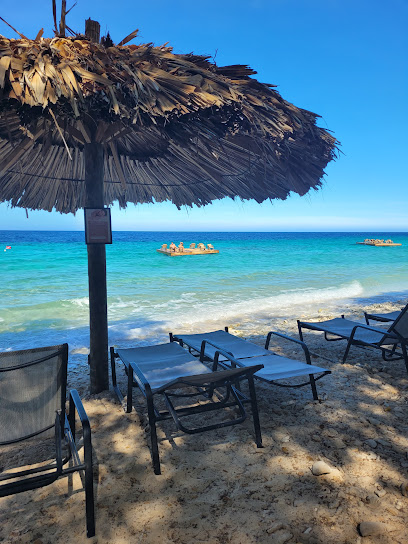
Markets, malls and hidden boutiques
Renaissance Mall & Rif Fort
Discover the Renaissance Mall & Rif Fort: A historic shopping haven in Willemstad with dining, unique shops, and picturesque views.

Sambil Curacao
Experience shopping, dining, and entertainment at Sambil Curacao, a vibrant shopping mall in Willemstad that embodies the spirit of the island.
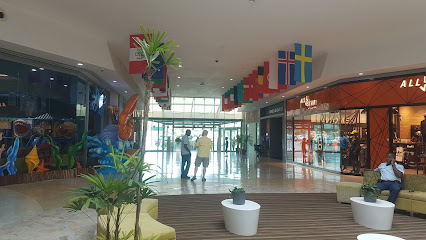
Mambo Beach Boulevard
Explore the vibrant Mambo Beach Boulevard in Curaçao, where shopping meets dining and nightlife by the stunning Caribbean coast.

Zuikertuin Mall
Experience the vibrant shopping scene at Zuikertuin Mall, where modern shops and delightful dining await in picturesque Willemstad, Curaçao.
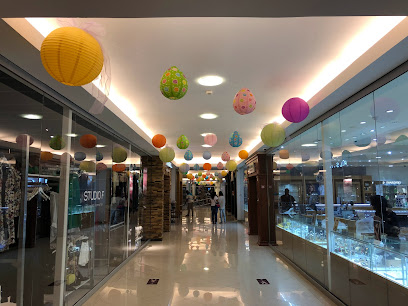
La Curacao
Discover the best of shopping in Willemstad at La Curacao, a vibrant department store offering a wide range of products to meet all your needs.
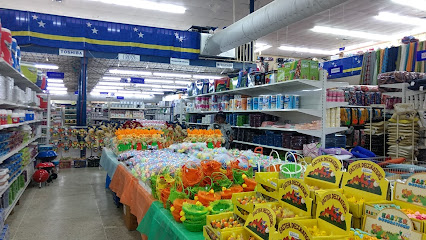
Promenade Shopping Center
Explore the vibrant Promenade Shopping Center in Willemstad - a shopping haven filled with unique boutiques, dining delights, and local charm.

Penha Duty Free Curacao in Punda
Discover unmatched luxury at Penha Duty Free Curacao, where high-end perfumes, cosmetics, and liquors await in the heart of Punda.
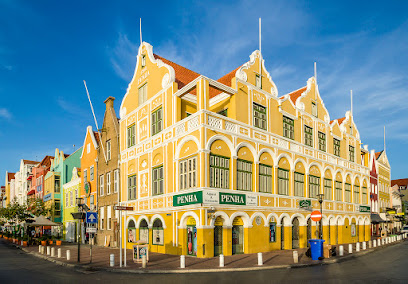
Playa Santa Cruz
Explore the tranquil beauty of Playa Santa Cruz, a picturesque beach in Curaçao perfect for relaxation and water adventures.

Mister & Miss Exclusive
Explore the unique blend of local and international fashion at Mister & Miss Exclusive in Willemstad, Curaçao, your ultimate shopping destination.
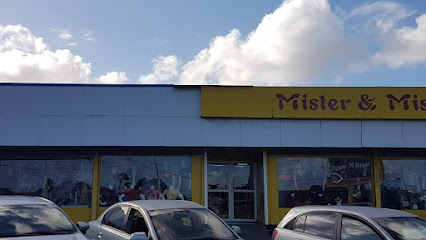
Caribbean Handcraft
Explore Caribbean Handcraft, your go-to destination for authentic souvenirs and local artistry in the heart of Curaçao's Jan Thiel.
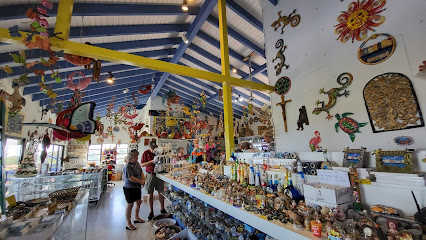
Balani's
Discover unique fashion at Balani's in Willemstad, where local flair meets contemporary style for the perfect shopping experience.
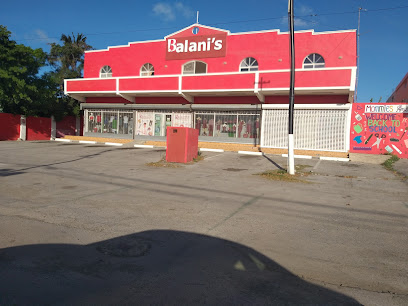
Omni Electronics
Explore top-notch electronics at Omni Electronics in Willemstad, Curaçao, where innovation meets exceptional customer service.
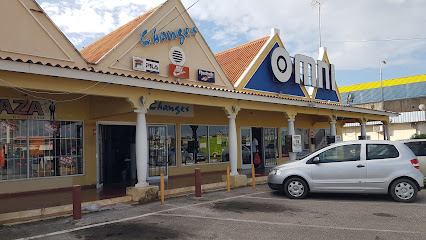
Chichi Shop Punda
Discover unique souvenirs and local treasures at Chichi Shop Punda, the heart of Curacao's artisanal craftsmanship and vibrant culture.
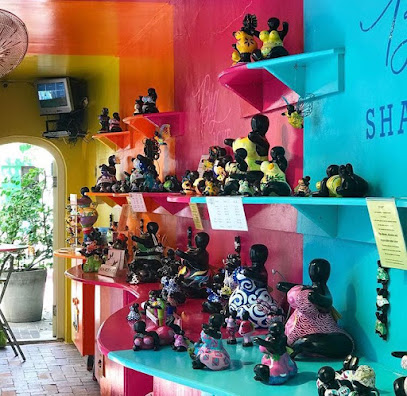
Santa Cruz Chinese Market
Explore the vibrant flavors of Santa Cruz Chinese Market in Curaçao, where Asian culinary delights await every visitor.
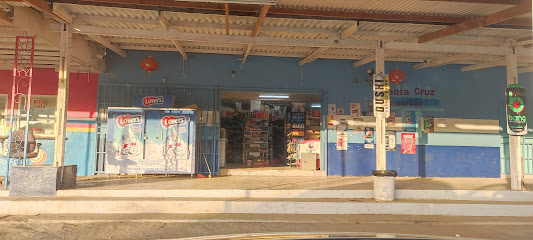
Sweetheart Curacao
Explore Sweetheart Curacao, a captivating toy store in Willemstad, offering a diverse range of toys and gifts for all ages in a vibrant shopping atmosphere.
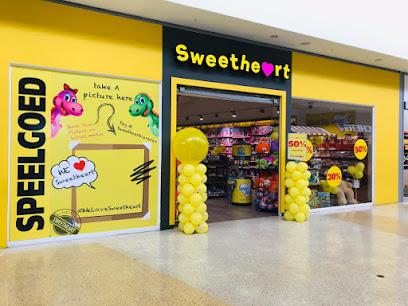
Essential bars & hidden hideouts
Daaibooi Beach Bar
Experience the vibrant atmosphere and stunning views at Daaibooi Beach Bar, the perfect spot for relaxation and delicious local cuisine in Curaçao.
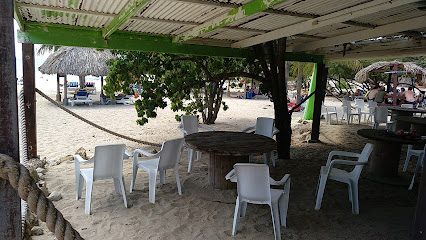
Shelterrock Paradise
Discover the lively atmosphere of Shelterrock Paradise, a restaurant and live music bar in Jan Donker, Curaçao, where flavor meets entertainment.

Netto Bar
Experience the vibrant nightlife at Netto Bar in Otrobanda, Willemstad, where refreshing drinks meet a lively atmosphere.
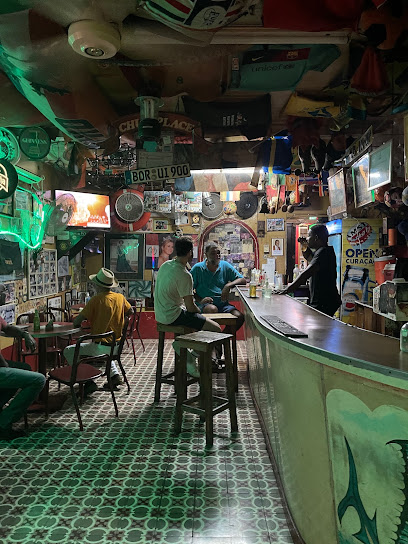
Bahia Beach Bar & Restaurant
Experience the perfect blend of stunning ocean views and delightful cuisine at Bahia Beach Bar & Restaurant in Curaçao.
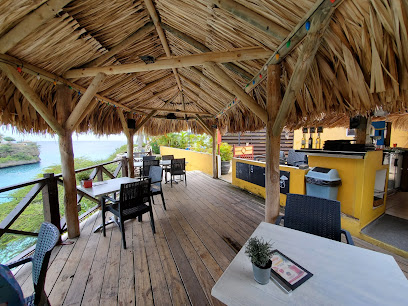
Koraal Rooftop Terrace
Experience stunning views and exquisite cuisine at Koraal Rooftop Terrace, a perfect fusion of flavor and atmosphere in Curaçao.
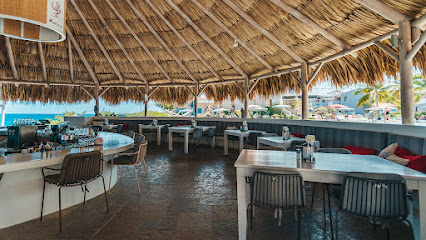
Mojitos & Bites
Discover the vibrant flavors of Curaçao at Mojitos & Bites, the ultimate sports bar and restaurant in Willemstad's Papagayo Plaza.
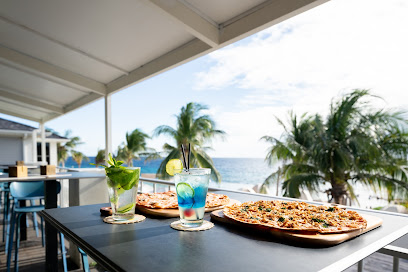
Schooner Bar
Discover the vibrant atmosphere and delicious small plates at Schooner Bar in Willemstad, a must-visit destination for every traveler in Curaçao.
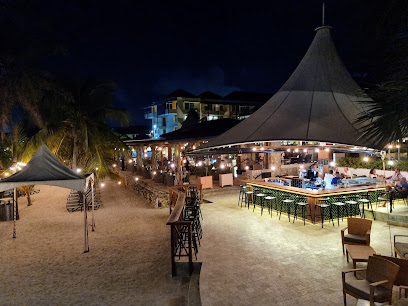
La Fogata Terrace & Sports Bar
Experience the vibrant atmosphere and delicious grilled dishes at La Fogata Terrace & Sports Bar in Willemstad, Curaçao.
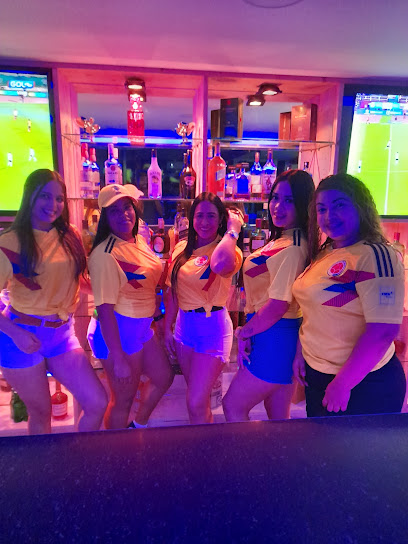
The World Best Mojito Bar
Experience the vibrant atmosphere and delightful mojitos at The World Best Mojito Bar in Willemstad, Curaçao, a must-visit for cocktail lovers.
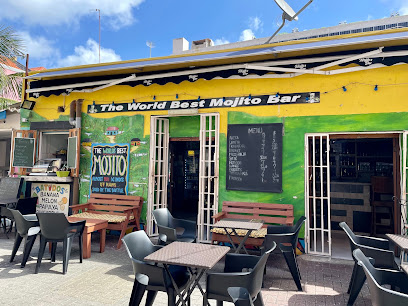
Cast away beach bar curacao
Discover the charm of Cast Away Beach Bar in Curaçao, where stunning views meet delicious food and tropical drinks for an unforgettable beach experience.
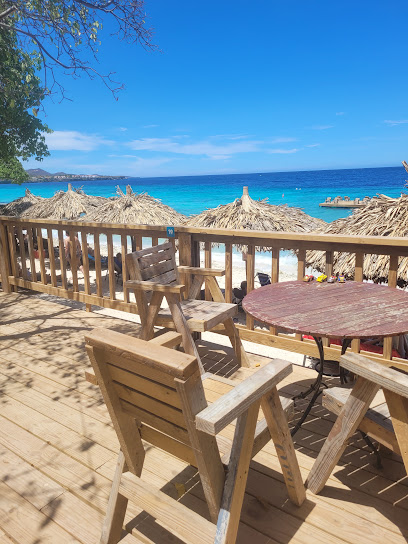
Blend Beach Bar @ Blue Bay Curaçao Golf & Beach Resort
Experience the ultimate beachside retreat at Blend Beach Bar, where delicious cuisine and breathtaking views await in beautiful Curaçao.

Infinity Pool Bar & Grill
Discover the culinary delights of Infinity Pool Bar & Grill in Curaçao, where stunning views and delicious grilled specialties create unforgettable dining moments.
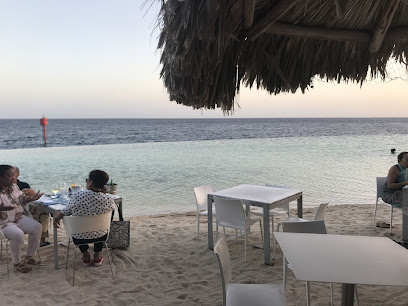
Flamingo Beach Bar
Discover the perfect blend of relaxation and local flavor at Flamingo Beach Bar in Willemstad, Curaçao, where stunning views meet refreshing drinks.
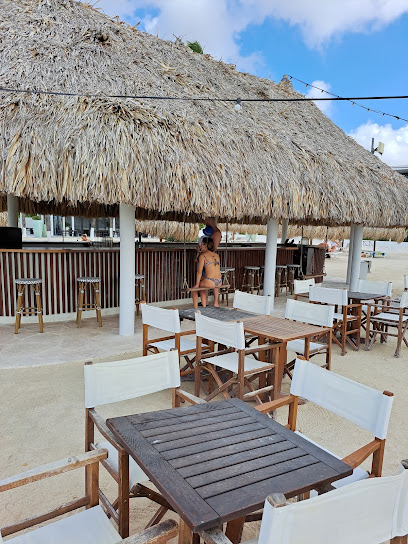
Coco Pool Bar
Discover the vibrant Coco Pool Bar in Willemstad, a tropical oasis perfect for relaxation and enjoying refreshing drinks in Curaçao.
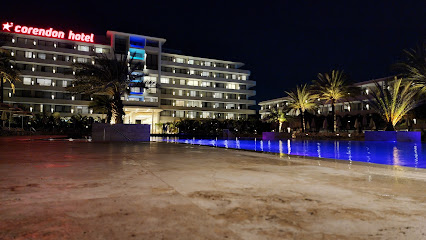
Tabú Bar & Bites Curacao
Discover the essence of Curaçao's nightlife at Tabú Bar & Bites, where cocktails meet culinary delights in a vibrant atmosphere.
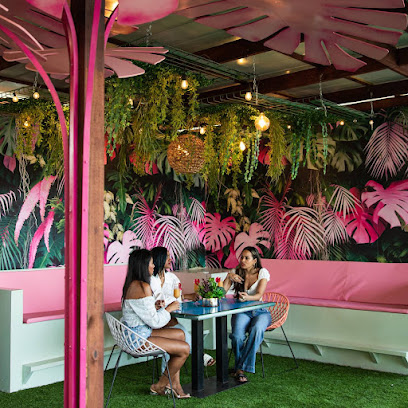
Local Phrases about Playa Santa Cruz
-
- HelloBon dia
[bon dee-ah] - GoodbyeAjo
[ah-ho] - YesSi
[see] - NoNo
[no] - Please/You're welcomePor fabor
[por fah-bor] - Thank youDanki
[dan-kee] - Excuse me/SorrySkuza mi
[skoo-zah mee] - How are you?Kon ta bai?
[kohn tah by] - Fine. And you?Bon. I bo?
[bon. ee boh?] - Do you speak English?Bo papia ingles?
[boh pah-pee-ah een-glehs?] - I don't understandMi no ta kompronde
[mee noh tah kom-prohn-deh]
- HelloBon dia
-
- I'd like to see the menu, pleaseMi ke mira e menu, por fabor
[mee keh mee-rah eh meh-noo, por fah-bor] - I don't eat meatMi no kome karne
[mee noh koh-meh kahr-neh] - Cheers!Salud!
[sah-lood] - I would like to pay, pleaseMi ke paga, por fabor
[mee keh pah-gah, por fah-bor]
- I'd like to see the menu, pleaseMi ke mira e menu, por fabor
-
- Help!Yudami!
[yoo-dah-mee] - Go away!Bai bai!
[bah-ee bah-ee] - Call the Police!Yama polis!
[yah-mah poh-lees] - Call a doctor!Yama un dokter!
[yah-mah oon dohk-tehr] - I'm lostMi a perde mi mes
[mee ah pehr-deh mee mehs] - I'm illMi ta malu
[mee tah mah-loo]
- Help!Yudami!
-
- I'd like to buy...Mi ke kumpra...
[mee keh koom-prah...] - I'm just lookingMi ta mira solamente
[mee tah mee-rah soh-lah-men-teh] - How much is it?Kuantu e kosta?
[kwan-too eh koh-stah?] - That's too expensiveEsaki ta muchu karu
[eh-sah-kee tah moo-choo kah-roo] - Can you lower the price?Bo por baha e preis?
[boh por bah-hah eh preys?]
- I'd like to buy...Mi ke kumpra...
-
- What time is it?Kuantu ora ta?
[kwan-too oh-rah tah?] - It's one o'clockTa un ora
[tah oon oh-rah] - Half past (10)Mitad di diez
[mee-tahd dee dee-ehs] - MorningMarduga
[mahr-doo-gah] - AfternoonAtardi
[ah-tar-dee] - EveningAnochi
[ah-noh-chee] - YesterdayAyer
[ah-yehr] - TodayAwe
[ah-weh] - TomorrowMañana
[mah-nyah-nah] - 1un
[oon] - 2dos
[dohs] - 3tres
[trehs] - 4cuater
[kwah-tehr] - 5sinku
[seen-koo] - 6seis
[seys] - 7site
[see-teh] - 8ocho
[oh-cho] - 9nuebe
[nweh-beh] - 10diez
[dee-ehs]
- What time is it?Kuantu ora ta?
-
- Where's a/the...?Unda ta e...?
[oon-dah tah eh...?] - What's the address?Kiko ta e adres?
[kee-koh tah eh ah-drehs?] - Can you show me (on the map)?Bo por mustra mi (riba e mapa)?
[boh por moos-trah mee (ree-bah eh mah-pah)?] - When's the next (bus)?Kuantu ora ta e siguiente (bus)?
[kwan-too oh-rah tah eh see-gwee-ehn-teh (boos)?] - A ticket (to ....)Un tiki (pa ....)
[oon tee-kee (pah ....)]
- Where's a/the...?Unda ta e...?
History of Playa Santa Cruz
-
Long before European explorers set foot on Curaçao, the island was inhabited by the Arawak people, specifically the Caquetio tribe. This indigenous group thrived on the island, utilizing its natural resources for fishing, farming, and crafting. Evidence of their presence can be found in the form of petroglyphs and ancient tools discovered around Playa Santa Cruz.
-
The Spanish arrived in Curaçao in 1499, led by Alonso de Ojeda. While the island was initially overlooked due to its lack of precious minerals, it soon became a point of strategic interest. The impact of the Spanish arrival was profound, leading to the displacement and decline of the indigenous population.
-
In 1634, the Dutch West India Company took control of Curaçao, transforming it into a hub for trade and commerce. The area around Playa Santa Cruz saw the establishment of plantations, where enslaved Africans were forced to work under harsh conditions. The remnants of these plantations and their economic contributions to the island's history are still evident today.
-
During the 17th and 18th centuries, the Caribbean was a hotspot for pirates and privateers. Playa Santa Cruz, with its secluded coves and hidden bays, provided an ideal location for these maritime marauders to seek refuge and plan their next raids. Stories of buried treasure and pirate lore add a thrilling layer to the area's history.
-
Curaçao played a significant role during World War II due to its strategic location and oil refinery in Willemstad. The refinery processed crude oil from Venezuela and supplied fuel to the Allied forces. Playa Santa Cruz's remote location made it a potential target for enemy submarines, adding a layer of wartime intrigue to its history.
-
In recent decades, Playa Santa Cruz has transformed into a popular destination for tourists seeking natural beauty and cultural experiences. Efforts have been made to preserve the area's environment and historical sites, ensuring that future generations can enjoy its rich heritage. The combination of pristine beaches, vibrant marine life, and historical significance makes Playa Santa Cruz a unique and captivating destination.
Playa Santa Cruz Essentials
-
Playa Santa Cruz is located on the western coast of Curaçao, near the village of Lagun. The nearest international airport is Hato International Airport (CUR), approximately 30 kilometers away. From the airport, you can rent a car, take a taxi, or use a shuttle service to reach Playa Santa Cruz. The journey typically takes around 45 minutes by road.
-
While Playa Santa Cruz itself is relatively small and walkable, renting a car is the most convenient way to explore the surrounding areas. Local buses operate on a limited schedule and may not be the most reliable option. Taxis are available, but it is advisable to agree on a fare before starting your journey. Cycling is also a popular way to get around for short distances.
-
The official currency in Curaçao is the Netherlands Antillean Guilder (ANG), but US Dollars (USD) are widely accepted. Credit cards are accepted in most hotels, restaurants, and shops. It is recommended to carry some cash for smaller establishments and tips. ATMs are available in larger towns, but it is advisable to withdraw enough cash before heading to more remote areas.
-
Playa Santa Cruz is generally safe for tourists. However, like any travel destination, it is important to take standard precautions. Avoid walking alone at night in unfamiliar areas and keep an eye on your belongings, especially on the beach. While there are no specific high-crime areas targeting tourists in Playa Santa Cruz, it is always best to stay vigilant and aware of your surroundings.
-
In case of emergency, dial 911 for immediate assistance. There is a local police station and medical facilities available in nearby larger towns. It is highly recommended to have travel insurance that covers medical emergencies. For minor health issues, there are pharmacies in nearby Lagun and other towns where you can purchase over-the-counter medications.
-
Fashion: Do wear comfortable, casual clothing suitable for the beach. Avoid overly revealing swimwear when not on the beach. Religion: Do respect local religious customs and traditions. Visit churches and religious sites with appropriate attire. Public Transport: Do be respectful to drivers and other passengers. Don't eat or drink on public transport. Greetings: Do greet people with a friendly 'Bon Dia' (Good Day) or 'Bon Tardi' (Good Afternoon). Eating & Drinking: Do try local delicacies like Keshi Yena and Funchi. Don't refuse food offerings, as it is considered impolite.
-
To experience Playa Santa Cruz like a local, consider visiting during the early morning or late afternoon when the beach is less crowded. Engage with local fishermen and learn about their daily catch. Don't miss trying freshly prepared fish at local eateries. Explore the nearby Christoffel National Park for hiking and wildlife spotting. Renting a snorkel or diving gear will allow you to fully appreciate the vibrant marine life in the area.
Nearby Cities to Playa Santa Cruz
-
Things To Do in Sabana Westpunt
-
Things To Do in Westpunt
-
Things To Do in Barber
-
Things To Do in Sint Michiel
-
Things To Do in Julianadorp
-
Things To Do in Willemstad
-
Things To Do in San Nicolas
-
Things To Do in Savaneta
-
Things To Do in Santa Cruz
-
Things To Do in Pos Chiquito
-
Things To Do in Paradera
-
Things To Do in Sero Blanco
-
Things To Do in Tanki Leendert
-
Things To Do in Oranjestad
-
Things To Do in Noord

